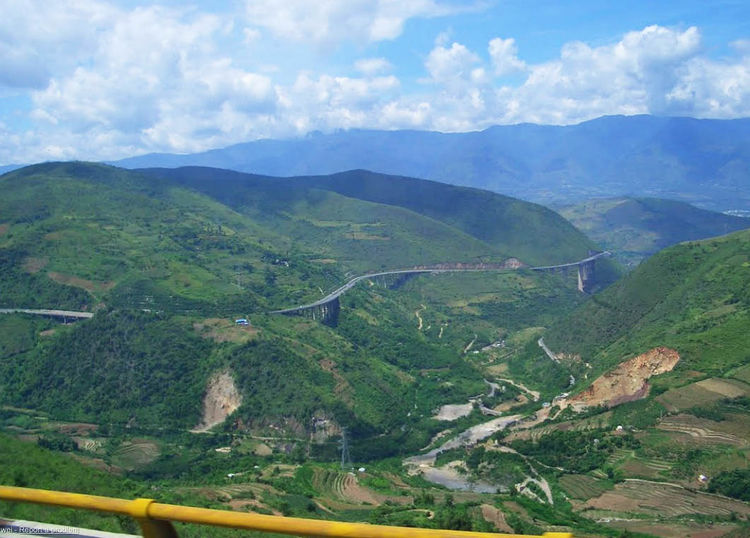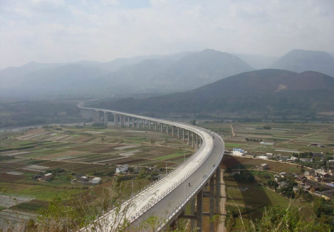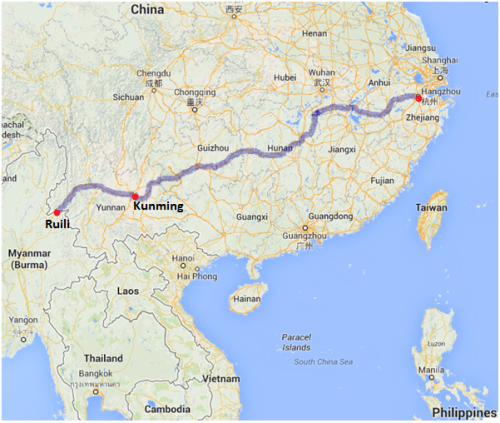China’s new Silk Roads – could carry Thai live cattle sourced from Australia .
This Post has Comments Off on China’s new Silk Roads – could carry Thai live cattle sourced from Australia .
The western end of the G56 Hangrui Expressway begins at the China – Myanmar border and runs all the way to Shanghai. It connects the outback of Myanmar to more than one thousand million customers.
The explosion of Chinese transport infrastructure we all hear about is not just about the populated areas in the east. Projects like this G56 Hangrui Expressway demonstrate how China is planning and building for the future when more and more products will flow from its neighbours to keep pace with its burgeoning demand.
The two photos are sections of G56 between Kunming, the capital of southwestern province of Yunnan and the tiny river town of Ruili on the Chinese side of the Myanmar border, that is, the middle of nowhere. A new Chinese built bridge completes the connection across the Ruili river (a major tributary of the Irrawaddy) to connect the sleepy town of Muse in the back end of Myanmar to the booming east coast of China. This expressway runs for 2,935 kilometers, roughly equivalent to a 4-lane freeway from Darwin to Adelaide. The last few hundred kilometers to Ruili are still under construction and a few other sections in the middle are also a work in progress.
The old Silk Road was an ancient overland trade route connecting China to the West. The G56 is only one of many major road and rail arteries connecting China to the rest of the world with exactly the same aim as in ancient times, facilitating trade, importing and exporting just about everything to and from just about everywhere. China has another 350 million poor rural people that it wants to lift up to middle class living standards over the next 20 years so there’s no time to waste and lots of trading, building and eating to get done.
Considering the demand for live cattle and beef in China, the more efficient flow of products from Myanmar into China will further deplete their cattle herds which have traditionally been exported to Thailand and Malaysia. The Thai government is currently negotiating with Beijing to open up live exports (legal) of its domestic cattle into China while it is at the same time in the final stages of completing a protocol to import feeder cattle from Australia. It could be that this freeway in far western China has a big impact on the demand for cattle in northern Australia.
More stories on some other silk roads to follow.
Source : Ross Ainsworth.Southeast Asian Beef Market Report. See http://seabeefreport.com/2014/06/09/chinas-new-silk-roads/


